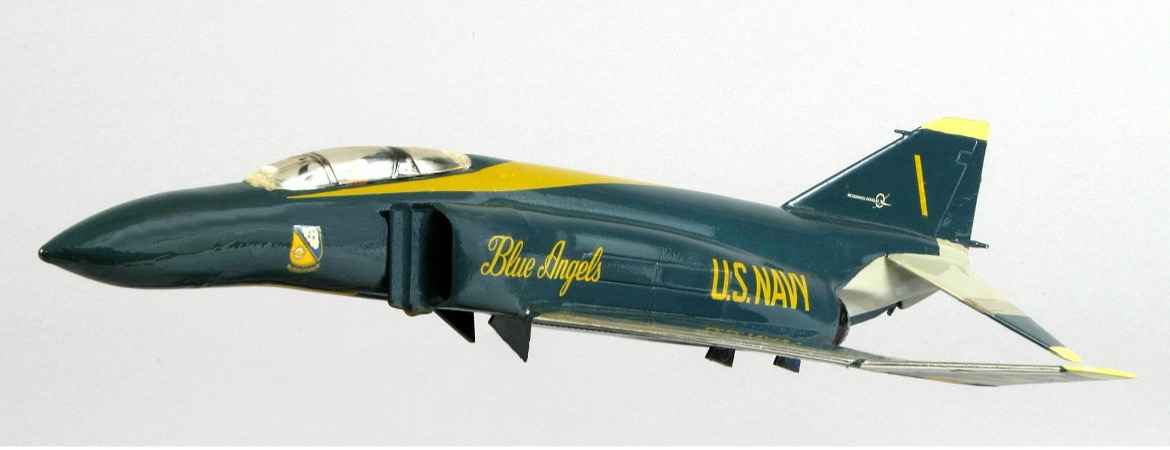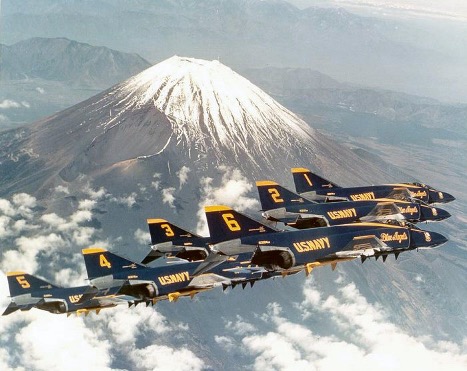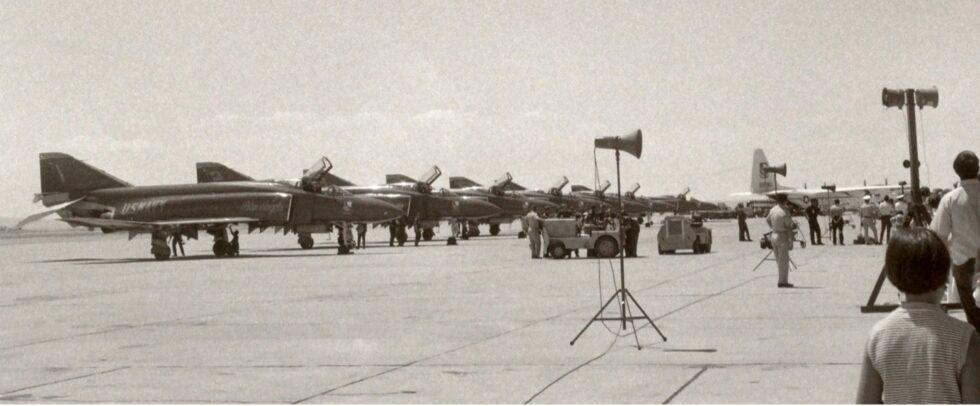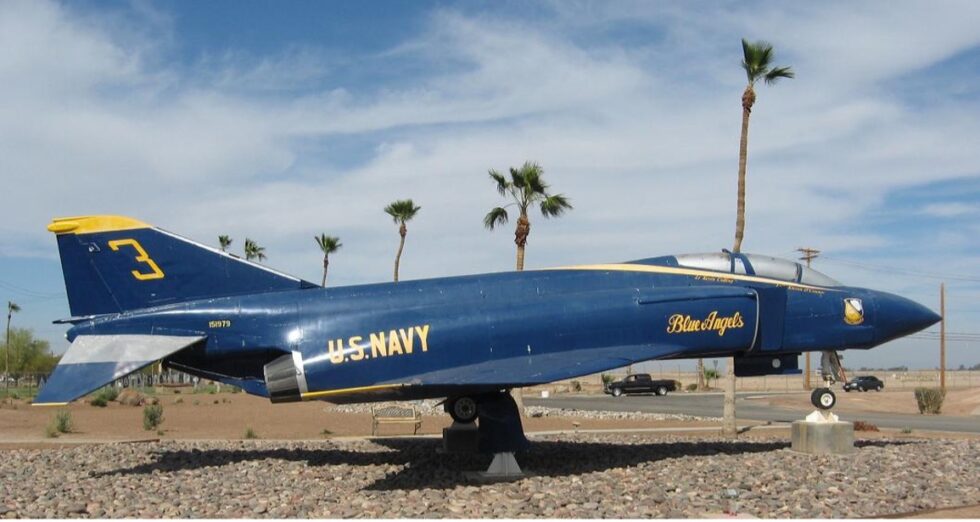U.S. Navy Blue Angels McDonnell F4-J Phantom

M. Finley
1/48
04/07/1976
historical significance
First Albuquerque Visit: 1974
Additional Information:
The McDonnell Douglas F-4 Phantom II is an American tandem two-seat, twin-engine, all-weather, long-range supersonic jet interceptor and fighter-bomber originally developed by McDonnell Aircraft for the United States Navy. Proving highly adaptable, it entered service with the Navy in 1961. The F-4 Phantom production ran from 1958 to 1981 and a total of 5,195 aircraft were built becoming the most produced American supersonic military aircraft in history.
The F-4 Phantom was a large fighter with a top speed of over Mach 2.2. It can carry more than 18,000 pounds of weapons on nine external points, including air-to-air missiles, air-to-ground missiles, and various bombs.
The F-4 Phantom was used extensively during the Vietnam War and it served as the principal air superiority fighter for the U.S. Air Force, Navy, and Marine Corps and became important in the ground-attack and aerial reconnaissance roles late in the war. The F-4 Phantom continued to form a major part of U.S. military air power throughout the 1970s and 1980s. The F-4 Phantom was also the only aircraft used by both the Air Force Thunderbirds and the Navy Blue Angels flight demonstration teams.
The McDonnell Douglas F-4 Phantom II was flown by the US Navy precision flying team, the Blue Angels. The aircraft began service with the Blue Angels on May 1, 1971. The F-4J Phantom II, Bu No. 153075 was seen at Kirtland Air Force Base in Albuquerque, New Mexico in May of 1974 as a transient aircraft and not part of the Blue Angels precision flying team demonstration.



